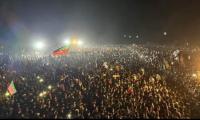Asia encompasses diverse countries and regions – in terms of religion, culture, language, ethnicity and history. However, the region has remained a geographical category not a cultural entity because of the lack – if not absence – of initiatives to conceptualise the continent as a cultural category.
Among rare initiatives for the intra Asia cultural and intellectual exchange are the activities undertaken by Asia Centre Japan Foundation. This centre provides a vibrant platform for the public intellectuals in Asia to foster dialogue and bring voices of citizens to the fore.
On October 14, 2018, the Asia Center Japan Foundation and the International House of Japan arranged a seminar on ‘Journalism in Asia: Searching for the Truth’ in Tokyo. The purpose of the seminar was to share experiences and thoughts on the current condition of the media and the challenges facing journalism across the world and discuss the way forward. The speakers included Kunda Dixit, Saba Naqvi and Kong Rithdee. All the speakers were former fellows of the Asia Leadership Fellow Program (ALFP). Mizuno Takaaki from the Kanda University of International Studies, Japan moderated the seminar.
Editor and publisher Kunda Dixit from Nepal provided an overall picture of journalism in the world. According to Kunda, journalists are independent voices of the people and can play a pivotal role in the creation of alternate voices. However, the role of journalists as watchdog and the voice of the people is under the threat in this post-truth era where demagogues challenge journalism. Due to this, disinformation, conspiracy, hate-mongering, self-censorship and obfuscation have become the norm in journalism. Such practices only damage the credibility of the media. Summing up this situation, Kunda quipped that the media has turned into a lapdog (instead of a watchdog).
Saba Naqvi is a journalist and author from India. From her experiences and study of the media, she inferred that the existing political narratives in South Asia appeal to emotions, fears and conspiracies. Big papers and TV channels have also embarked upon the populist bandwagon of whipping hysteria. Saba was of the view that with the spread of technology to rural areas the situation is going to aggravate. Shedding light on the nexus between the business interests of media houses and freedom of press, she claimed that ownership pattern is the issue not the journalist. It also is a daunting task for journalists to expel the deeply settled patterns of populist narratives within media.
Kong Rithdee from Thailand presented an interesting argument about journalism. He declared journalism as the art and state of unconsciousness. However, the media in the post-truth world can induce a sleep epidemic among its consumers. Complacent practitioners of journalism cause this sleep. People in this state of complacency do not like to raise disturbing questions about the truth; rather, they prefer to settle in prescribed or comfortable truths. This causes slumber. So it can be said that instead of awakening citizens from slumber, the media in this post-truth time induces mental sleep.
Overall, the reflections in the seminar painted a bleak scenario, resembling Orwellian dystopia. In the start of the 21st century, humanity entered into the stage of history with the confidence that it is in the age of freedom. Unfortunately, we are now standing at the start of a new millennium, inaugurating a post-truth period. To our dismay, we are talking about increasing erosion of truth and more control through the social media algorithm.
When the processes of interaction and discussion are handed over to algorithms controlled by invisible hands and minds, then it is natural that people will forget the algebra of revolution or transformation. Therefore, it can be safely said that we live in an age where truth is manufactured for us in the labyrinth of social and popular media. This does not mean that media is untruth per se. Those who totally reject social media or electronic media basically kill the messenger instead of critically reflecting on the message.
The social and media transformation we witness in these post-truth times are signs of the great shift of humanity towards a cyber future. The newspaper is marked by standardisation that a news item printed in a newspaper will be same for all its readers. Unlike information-sharing in previous eras of human history where information took time to reach its recipients with admixture of information from the carrier, the newspaper succeeded to break the control of the messenger on information.
A new medium also brings about changes in society by changing the nature of communication. As a new medium, the newspaper helped form public opinion and expanded public spaces for discussion. Before that a person had to be physically present in a public sphere to communicate and discuss. Now a reader can have information about his/her locality, region and the world through the pages of a newspaper. The more the circulation of newspaper, the more is the expansion of the public sphere for communicative interface and action among masses. Jürgen Habermas, in his book ‘The structural transformation of the public sphere’, attributes the emergence of the civil society as a distinct public realm to the circulation of newspapers as it helped generate critical discussion of public affairs.
The spaces created by newspapers, journals, reading rooms, weekly papers and other printed products were the product of modernity. Modernity embodied itself physically in the shape of factory, office, book, maps, library, public spaces and clear-cut ideological boundaries. In other words, the mediums of modernity created physical spaces. However, the very nature of the classical public sphere of modernity is undergoing drastic transformation under the influence of information and communication technology.
Today social media has emerged as a major challenger to traditional media and journalism. Although social media has helped connect people, it has also led to a ghettoisation of groups and atomisation of the individual. Now people do not have time to read the whole newspaper or watch TV. Instead, they receive most of the news in a decontextualised form from their respective social media group. Since social media groups have a particular way of looking at things in an unstructured form, they tend to ignore news that does not fit within their point of view. As a result, they lose sight of the view from other angles.
Kunda Dixit thinks that social media is hijacked by algorithms. He is of view that the real culprit in this situation is not the messenger but the disseminator. However, in the maze of social media algorithms it is difficult to identify the disseminator and confirm the veracity of truth in post-truth times. It seems that our personal and public lives have been wedded to surveillance methods provided by inventions in information technology and Artificial Intelligence (AI).
Developed and powerful states in the world have perfected the method of surveillance. Countries in Asia are also following suit. There are signs that public opinion in some parts of Asia may be tilting towards narratives that espouse surrendering of political and social liberties for economic prosperity. With the divorce of political, social and economic from one another, it is easier for new mediums and big brothers to create a fragmented view of the world and cater to the atomised individual and ghettoised spaces of social media.
Scepticism regarding the media was there when newspapers became the dominant medium. The newspaper became a hallmark of modernity because it adopted itself to the needs of modern homo sapiens. Mark Twain is said to have remarked, ‘If you don’t read the newspaper, you’re uninformed. If you read the newspaper, you’re mis-informed.’ Twain might have said this for the readership of the newspaper in his time, but his observation is even more relevant to our situation now.
The next challenge for journalism in Asia is to situate itself within the shifting terrain and landscape of the media, where the messenger kills the message to become the message.
The writer is a fellow of Asia Leadership Fellow Program, Tokyo, Japan.
Email: azizalidad@gmail.com
The cases of Attabad Lake and Gwadar simply highlight the many tragedies that exist around the country
Reaffirming loyalty to democracy as a problem solver can be a good starting point
Unfortunately, Pakistani films and TV dramas have seldom ventured beyond domestic intrigues and love triangles
A woman walks past a building of the International Monetary Fund. — AFP/FileThe annual and spring meetings of the...
Late Benazir Bhutto's daughter Asifa Bhutto Zardari addresses the Christian community in Bihar Colony on January 23,...







